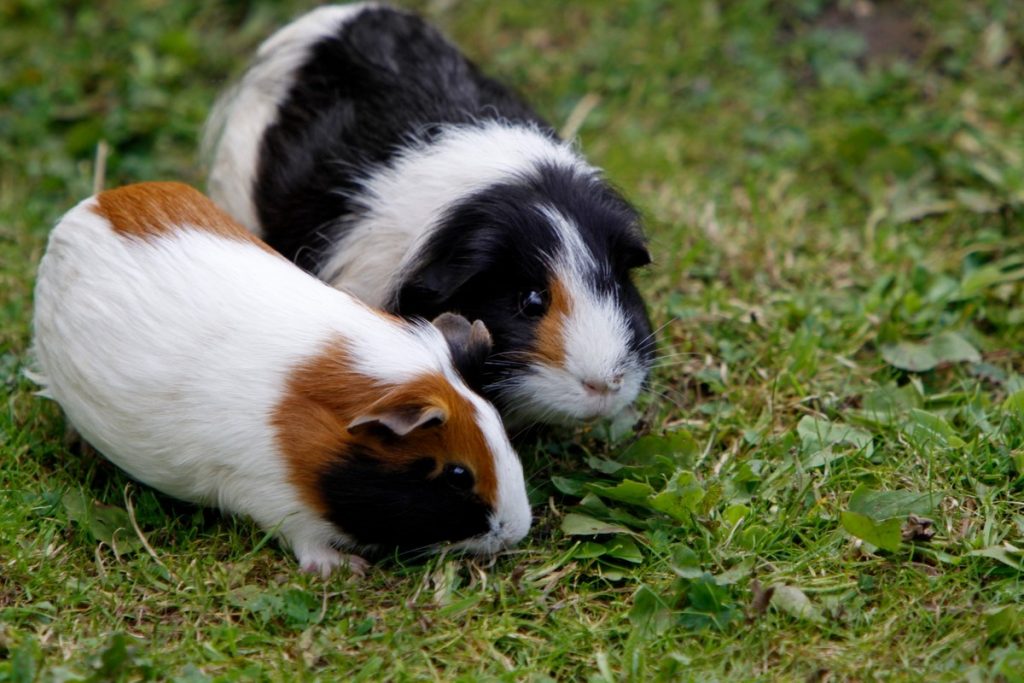Guinea pigs are small rodents that are commonly kept as pets. There are many different breeds of them, with a wide variety of coat lengths and colors. Due to their friendly and sociable nature, they’re considered by many to be great pets for children.
In any case, there should always be a responsible adult around to ensure that they’re properly cared for. Here are some important tips for caring for guinea pigs:
1. Cages
Many cages intended for guinea pigs are far too small, leaving them little room to roam freely. When you consider that they’re among the largest rodents commonly kept as pets, it doesn’t make much sense for their cages to be only slightly larger than those meant for hamsters.
Guinea pigs rely on floor space for their exercise, so expecting them to live comfortably in a 2 square foot enclosure is like expecting a human to live in a walk-in closet. Veterinarians recommend at least 7.5 square feet of space for one or two guinea pigs, 10.5 square feet for three, and 13 square feet for four.
2. Water bottle
Instead of a typical water dish, consider providing your guinea pig with a water bottle. The most obvious advantage is that they won’t be able to knock it over and make a huge mess. You’ll also avoid the hassle of cleaning out food particles and bedding material that might land in an open bowl.
Read also – 10 Ways Pets Improve Your Health
3. Food
Most guinea pigs aren’t known for overeating, but it’s still important to make sure they get a balanced diet. About 1/8 cup a day of pellets is usually enough, with some fresh vegetables and an unlimited amount of hay. A cup of veggies per day is sufficient.
These should be leafy greens like spinach, romaine lettuce, or kale. You might add some carrots and zucchini once or twice a week for variety. The hay keeps their digestive systems healthy and minimizes the growth of their teeth.
Read also – 10 Plants to Keep Away from Pets
4. Toys
Guinea pigs love foraging, so if you can find toys that can be stuffed with treats, you’ll have no problem keeping them entertained. Remember that your guinea pig’s teeth will continue growing throughout their lifetime, and the chew toys you find at the pet store will actually help keep this under control. If you can’t afford to buy toys for your guinea pig, you can consider some “natural toys” like apples. Just be aware, apple seeds can be poisonous to your pet.
Read also – 10 Easy Ways to Save on Pet Costs
5. Bedding
When it comes to bedding, there are all sorts of products to choose from. Some guinea pig owners use towels or paper, but pine shavings and pellets are also among the most commonly used types of bedding. Others have been known to get pretty creative, lining the entire cage bottom with fleece or towels.
The bottom line is that you have to find what works best in terms of cost and comfort for your pet. Whatever you do, remember that keeping it clean is vital to your guinea pig’s health.
Read also – 9 Wonderful Benefits of Owning a Guinea Pig
6. Hay
Hay is actually supposed to make up the bulk of a guinea pig’s diet, so try to keep it interesting. There are different types to choose from, including timothy hay, oat grass, and orchard grass. Use a hay rack instead of placing it near the bedding.
The last thing you want is your guinea pig accidentally ingesting some of his bedding with the food and getting sick. Make sure you leave fresh hay in the rack every day and try to keep it at least ¾ full.
Read also – 10 Most Unique Pets You Can Own
7. Hiding place
Although guinea pigs have been domesticated for quite some time, they still feel a need to have a place to hide from potential threats, real or imagined. You have to remember that despite being in a relatively safe home, they still retain the primitive instincts that once saved them from large predators.
Pet stores carry a variety of custom huts that would be ideal for your guinea pig, but if you have the materials to make one yourself, you might be able to create something a bit more special.
Read also – 10 Things to Consider When Looking for a Pet
8.Grooming
About grooming, guinea pigs with long hair should be brushed daily. This will keep their hair from getting matted and reduce shedding. Although they rarely require bathing, shampoos are specially formulated for small animals to avoid giving them dry skin. Nails should be clipped monthly, and this practice should begin as early as possible to get them used to the process.
Read also – 10 Small Pets That Are Great for Kids
9. Cleaning
Try not to let more than a week go by between cage cleanings. If anything, your nose will remind you that it’s time. How often you actually need to clean it might also depend on how large the cage is, how many guinea pigs live there, their ages, and what type of bedding they have. As far as age goes, younger ones tend to produce somewhat less waste. You may even find that daily spot cleaning works better.
Read also – Top 8 Common Pet-Owner Mistakes
10. Exercise
Exercise is just as important for your guinea pig’s health as it is for yours. This is easily accomplished by taking your pet into a large enclosed space with a floor that’s easily cleaned and just letting them roam around. You can make it more fun by hiding some of their favorite foods in strategic places and placing various obstacles around the room for them to run through.
Guinea pigs will normally live for 5 to 6 years, provided they’re in good health, although some may live a bit longer. Owning one can be an enriching experience, but they still need to be looked after responsibly, like any other type of pet. If you’re considering getting one, these important tips for caring for guinea pigs might prove to be quite useful. If you have guinea pigs, do you have any other tips to share with us?

